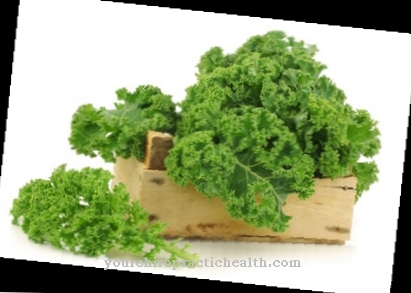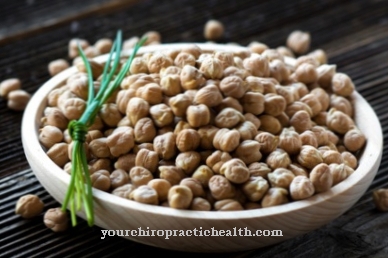Of the mushroom is one of the most popular edible mushrooms worldwide. The mushrooms are also known as Egerlingen or Angerlinge be designated to a genus from the family of mushroom relatives.
What you should know about mushrooms

The mushroom consists of a hat and a stem. It forms very fleshy and medium to large fruit bodies. The skin of the mushroom hat is white, brown or yellowish in color. The hat surface can be fibrous, smooth, or flaky. However, it is always dry.
Greasy surfaces indicate rotting processes. The lamellae of the mushroom are densely packed. They are initially gray to pink in color and appear pale. Only when the fungal spores ripen do they develop their characteristic brown to black color. Unlike the spores of the death cap mushroom, the spores of the mushroom are never white. This important feature can help differentiate the tasty Egerling from the poisonous death cap mushroom. The edge of the lamellar edge of the mushroom is covered with fine flakes. The stem is in the middle and can be easily separated from the mushroom cap. It has a cylindrical shape.
Usually the stem is filled, but it can become hollow with age. There is often a tuber at the base of the stem. However, a volva never surrounds the mushroom body. A volva (vagina) is a bulge-like skin that covers the fruiting body of some mushrooms. A special feature of the mushrooms is the velum partiale. It is a sliding ring that remains on the mushroom stem. The flesh of the mushroom cap is usually white. If the skin is injured, it can also appear reddish or yellowish. The odor of the mushroom depends on the type. Some varieties have an aniseed or almond scent.
Mushrooms are so-called saprobiontic inhabitants. This means that they are subsequent decomposers that live on dead organic substances. They occur naturally on compost, in forests, in meadows or in gardens. In Europe there are nine different types of mushrooms in nature. These include, for example, the guinea fowl mushroom and the meadow mushroom. In Germany and neighboring countries mainly white and brown mushrooms are grown. A special substrate is required for growing mushrooms.
This is produced from various organic raw materials. The "mushroom seeds" are then added to the substrate under sterile conditions. These are wheat grains that have grown over with the mycelium of the fungi. In two weeks the fungus grows through the substrate. The growth of the fungi can be influenced by regulating the relative humidity, the temperature and the CO2 content. As a rule, the mushrooms are harvested by hand.
Importance to health
Mushrooms contain a lot of nutrients. The high copper content has a positive effect on the production of red blood cells. This is what the body needs for oxygen uptake and oxygen transport within the body.
Copper also strengthens the immune system and thus improves the body's defense against viruses, bacteria and other pathogens. The trace element also promotes wound healing and facilitates the absorption of iron from food. So iron-rich foods should ideally be consumed together with mushrooms. The B vitamins contained in the mushrooms also promote blood formation. They are also a prerequisite for a functioning nervous system. A deficiency in B vitamins, for example, can lead to abnormal sensations.
Ingredients & nutritional values
There are many different minerals, vitamins and proteins in mushrooms. Vitamins of the B group are particularly represented. The mushrooms also contain provitamin D. This can be converted into vitamin D in the body. The copper content is also worth mentioning. One portion of mushrooms already covers half of the daily copper requirement.
Mushrooms are not only rich in nutrients, they are also low in calories. 100 grams of mushrooms contain only 21 calories. They are therefore well suited for a low-calorie diet for weight loss. Mushrooms are also suitable for the low-carb diet. 100 grams contain only 0.6 grams of carbohydrates, but 4 grams of protein.
Intolerances & allergies
Mushrooms are generally hard to digest foods. Consumption of larger quantities or consumption shortly before going to bed can therefore lead to digestive disorders with cramps and flatulence. Some people develop an intolerance to mushrooms over the course of their lives. The body reacts to the contained mushroom protein. Possible symptoms of such an intolerance are vomiting, diarrhea, abdominal pain, shortness of breath or a rash.
Shopping & kitchen tips
Cultivated mushrooms are available all year round. When buying, you should make sure that the mushrooms are undamaged. The mushrooms are, however, quite sensitive. They should therefore not be stored for long. If stored for too long, they will become spongy. A storage time of two to three days should therefore not be exceeded.
The mushrooms can be stored in a bowl in the refrigerator. If the mushrooms are covered with a plastic film, this should be removed. Otherwise the fungi cannot breathe and mold will form more quickly. If the temperature is too high, the mushrooms will become spongy and smear. Storage in a draft is also not recommended. In direct sunlight, mushrooms will turn black and dry.
Mushrooms tend to take on the smell and taste of other foods. They should therefore not be stored in the vicinity of strongly smelling foods. Fruits containing ethylene should also not be stored with the mushrooms. Otherwise, the mushrooms will wrinkle faster.
Preparation tips
Depending on the type of preparation, mushrooms generate more or less waste. In principle, the mushrooms can be consumed completely. However, many people do not like the mushroom stem and cut it off before preparing it. Mushrooms should not be washed in standing water. They soak up water, become spongy and lose their aromatic taste. It is better to remove dirt from the mushrooms with a dry cloth or a small brush. Larger soiling can be washed off under running water.
In principle, mushrooms can also be eaten raw. However, people with sensitive stomachs often react badly to raw mushrooms. Lemon juice can be drizzled over them to prevent discoloration of the cut raw mushrooms. Mushrooms contain the substance agaritin. This is toxic in larger quantities. Mushroom quantities of 100 grams or more should therefore be cooked. The argaritine is broken down when heated.
Mushrooms not only taste good raw, they can also be fried, deep-fried, stewed, boiled or grilled. They harmonize with Asian dishes, but are also part of German cuisine in the form of hunter sauce or hearty mushroom pans. Mushrooms go well with poultry, game and beef. Most other vegetables, pasta, rice and potatoes can also be combined well with mushrooms.













.jpg)

.jpg)
.jpg)











.jpg)